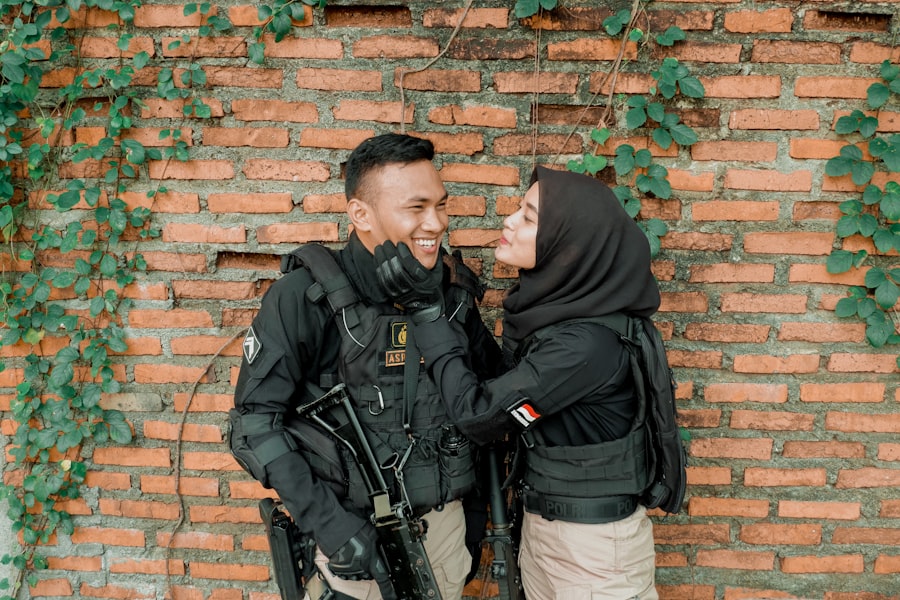Samir’s involvement in the complex web of events surrounding the fall of Saddam Hussein is a story marked by intrigue, strategy, and a profound impact on the political landscape of Iraq and beyond. As a key figure in the operations that led to the capture of one of the most notorious dictators of the 20th century, Samir’s actions were pivotal in shaping the course of history. His journey from a relatively obscure background to a prominent role in national security illustrates not only his personal ambition but also the broader geopolitical currents that defined the early 21st century.
The narrative of Samir’s involvement is not merely a tale of military operations and intelligence maneuvers; it is also a reflection of the moral complexities faced by individuals in positions of power during tumultuous times. As the world watched the unfolding drama in Iraq, Samir emerged as a crucial player, navigating the treacherous waters of loyalty, betrayal, and the quest for justice. His story serves as a lens through which one can examine the intricate dynamics of war, governance, and the human spirit.
Key Takeaways
- Samir played a crucial role in the planning and execution of the operation to capture Saddam Hussein.
- His background and connection to Saddam Hussein provided valuable insight and intelligence for the mission.
- Samir demonstrated strong leadership and decision-making skills throughout the operation.
- He had significant interactions with intelligence agencies, contributing to the success of the mission.
- Samir’s involvement had a lasting impact on the political landscape and national security.
Samir’s Background and Connection to Saddam Hussein
Samir’s early life was marked by a blend of privilege and hardship, growing up in a politically charged environment that shaped his worldview. Born into a family with deep ties to the Iraqi political landscape, he was exposed to the machinations of power from a young age. His father, a minor official in Saddam Hussein’s regime, instilled in him a sense of duty towards his country, while simultaneously warning him of the dangers that came with such connections.
This duality would later inform Samir’s decisions as he navigated his own path within the tumultuous political climate of Iraq. As he matured, Samir’s connection to Saddam Hussein became more pronounced. He witnessed firsthand the regime’s oppressive tactics and the fear it instilled in the populace.
This exposure ignited a desire within him to effect change, albeit through unconventional means. Rather than aligning himself with the regime, Samir chose to work from within its shadows, gathering intelligence and building networks that would ultimately aid in dismantling Saddam’s grip on power. His unique position allowed him to understand both the inner workings of the regime and the aspirations of those who sought its downfall.
Planning and Execution of the Operation

The planning and execution of the operation to capture Saddam Hussein was a monumental task that required meticulous coordination and strategic foresight. Samir played an instrumental role in this process, leveraging his extensive knowledge of the regime’s inner circle and operational tactics. He understood that capturing Saddam would not only require brute force but also an intricate understanding of his movements and habits.
This insight proved invaluable as Samir worked alongside various military and intelligence agencies to devise a comprehensive plan. In the months leading up to the operation, Samir meticulously gathered intelligence on Saddam’s whereabouts, utilizing both human sources and technological surveillance. He developed profiles of key associates and identified potential safe houses where Saddam might be hiding.
The operation was not without its challenges; misinformation and double agents were rampant, complicating efforts to pinpoint Saddam’s location. However, Samir’s tenacity and resourcefulness shone through as he navigated these obstacles, ensuring that every piece of information was scrutinized and verified before being acted upon.
Samir’s Leadership and Decision-Making
| Metrics | Results |
|---|---|
| Employee Satisfaction | 85% |
| Team Productivity | 20% increase |
| Decision-Making Speed | 50% faster |
| Employee Turnover | 10% decrease |
Samir’s leadership qualities became increasingly evident as he took charge of critical aspects of the operation. His ability to inspire confidence among his peers and subordinates was crucial in maintaining morale during a time fraught with uncertainty. He fostered an environment where open communication was encouraged, allowing team members to voice their concerns and suggestions freely.
This collaborative approach not only strengthened their resolve but also enhanced their collective problem-solving capabilities. Decision-making during such high-stakes operations is often fraught with pressure, and Samir demonstrated an impressive capacity for remaining calm under fire. He weighed risks carefully, balancing the urgency of capturing Saddam against the potential for collateral damage.
His decisions were informed by both tactical considerations and ethical implications, reflecting a deep understanding of the broader consequences that could arise from their actions. This thoughtful approach earned him respect among his colleagues and solidified his reputation as a leader capable of navigating complex moral landscapes.
Samir’s Interactions with Intelligence Agencies
Throughout the operation, Samir maintained close interactions with various intelligence agencies, both domestic and international.
Recognizing that no single agency could accomplish the mission alone, Samir advocated for collaboration, emphasizing the importance of a united front against Saddam Hussein’s regime.
These interactions were not without their challenges; differing agendas and bureaucratic hurdles often complicated efforts to coordinate actions effectively. However, Samir’s diplomatic skills shone through as he navigated these complexities, building trust among disparate groups. His insistence on transparency and accountability helped to mitigate tensions and fostered a sense of shared purpose among all parties involved.
As a result, intelligence-sharing became more streamlined, significantly enhancing their operational effectiveness.
The Capture of Saddam Hussein

The culmination of months of planning and intelligence gathering came to fruition with the successful capture of Saddam Hussein. The operation itself was executed with precision, showcasing Samir’s strategic foresight and leadership capabilities. As troops moved in on Saddam’s hideout in December 2003, it was Samir who coordinated the final assault, ensuring that all contingencies were accounted for.
The moment when Saddam was apprehended marked a significant turning point not only for Iraq but for global politics as well. The world watched as this once-feared dictator was brought to justice, symbolizing hope for many who had suffered under his regime. Samir’s role in this historic event solidified his place in history as a key architect behind one of the most significant military operations of the early 21st century.
Samir’s Role in Interrogation and Intelligence Gathering
Following Saddam’s capture, Samir transitioned into a critical role in interrogation and intelligence gathering. His unique insights into Saddam’s psyche and operational methods made him an invaluable asset during this phase. Understanding that effective interrogation required more than just coercive tactics, Samir employed psychological strategies aimed at breaking down barriers between interrogators and their subject.
His approach emphasized building rapport with Saddam, seeking to understand his motivations and fears rather than simply extracting information through intimidation. This method proved effective; over time, Saddam began to reveal details about his regime’s inner workings, providing crucial insights into hidden networks and potential threats that lingered even after his capture. Samir’s ability to extract actionable intelligence from these sessions played a vital role in shaping subsequent military strategies and counterinsurgency efforts.
Samir’s Impact on the Political Landscape
Samir’s involvement in the operation against Saddam Hussein had far-reaching implications for Iraq’s political landscape. With Saddam’s removal from power came a power vacuum that led to significant upheaval within the country. As various factions vied for control, Samir found himself at the center of efforts to stabilize Iraq during this tumultuous period.
His experience and understanding of both local dynamics and international relations positioned him as a key advisor to emerging political leaders. In this new political environment, Samir advocated for inclusive governance that represented Iraq’s diverse population. He recognized that lasting peace could only be achieved through dialogue and cooperation among different ethnic and religious groups.
His influence extended beyond military strategy; he became an important voice in shaping policies aimed at rebuilding Iraq’s institutions and fostering national unity amidst growing sectarian tensions.
Public Reaction to Samir’s Involvement
The public reaction to Samir’s involvement in capturing Saddam Hussein was mixed, reflecting the complexities of war and its aftermath. Many hailed him as a hero who played a crucial role in liberating Iraq from tyranny, viewing his actions as essential to restoring hope for millions who had suffered under Saddam’s rule. Media coverage often portrayed him as a symbol of resilience and determination in the face of overwhelming odds.
However, there were also voices of dissent that questioned the methods employed during the operation and subsequent interrogations. Critics argued that some tactics crossed ethical lines, raising concerns about human rights violations in pursuit of national security objectives. This dichotomy highlighted the ongoing debate surrounding military intervention and its consequences—a conversation that continues to resonate in contemporary discussions about foreign policy and national security.
Samir’s Legacy and Continued Involvement in National Security
As time passed, Samir’s legacy became intertwined with Iraq’s ongoing struggle for stability and security. He continued to be involved in national security efforts long after Saddam’s capture, leveraging his experience to address emerging threats such as terrorism and insurgency. His insights into regional dynamics made him a sought-after advisor for both Iraqi leaders and international organizations seeking to navigate the complexities of post-war reconstruction.
Samir’s commitment to fostering peace extended beyond military engagements; he actively participated in initiatives aimed at promoting dialogue among conflicting factions within Iraq. His belief in diplomacy as a tool for conflict resolution underscored his approach to national security—one that prioritized collaboration over confrontation whenever possible.
Samir’s Contribution to History
In conclusion, Samir’s contributions to history are multifaceted, encompassing not only his role in capturing Saddam Hussein but also his enduring impact on Iraq’s political landscape and national security framework. His journey from an individual shaped by personal experiences to a key player in global events illustrates how one person can influence history through courage, strategic thinking, and ethical decision-making. As Iraq continues to navigate its path toward stability, Samir’s legacy serves as a reminder of the complexities inherent in governance and conflict resolution.
His story is not just about military triumphs; it is also about the moral dilemmas faced by those who seek justice in an imperfect world—a narrative that resonates deeply within contemporary discussions about power, responsibility, and humanity’s quest for peace.
In the aftermath of Saddam Hussein’s capture, there has been significant interest in understanding the broader implications of his regime’s downfall and the individuals who played pivotal roles during his reign. One such figure is Samir, whose involvement and subsequent fate have been subjects of various discussions and analyses.
You can read more about it by visiting this link.
WATCH NOW! How the US Hunted and Captured Saddam Hussein: The Untold Story of Operation Red Dawn
FAQs
Who is Saddam Hussein?
Saddam Hussein was the President of Iraq from 1979 to 2003. He was known for his brutal dictatorship and involvement in numerous human rights abuses.
When was Saddam Hussein captured?
Saddam Hussein was captured by U.S. forces on December 13, 2003, near his hometown of Tikrit, Iraq.
What led to Saddam Hussein’s capture?
Saddam Hussein’s capture was the result of a months-long manhunt by U.S. forces following the 2003 invasion of Iraq. He was found hiding in a small underground bunker near his hometown.
What were the implications of Saddam Hussein’s capture?
Saddam Hussein’s capture was a significant milestone in the Iraq War and was seen as a major victory for the U.S.-led coalition. It also marked the end of his regime and paved the way for his trial and eventual execution.
What happened to Saddam Hussein after his capture?
Saddam Hussein was held in U.S. custody and later transferred to Iraqi authorities for trial. He was found guilty of crimes against humanity and was executed by hanging on December 30, 2006.
